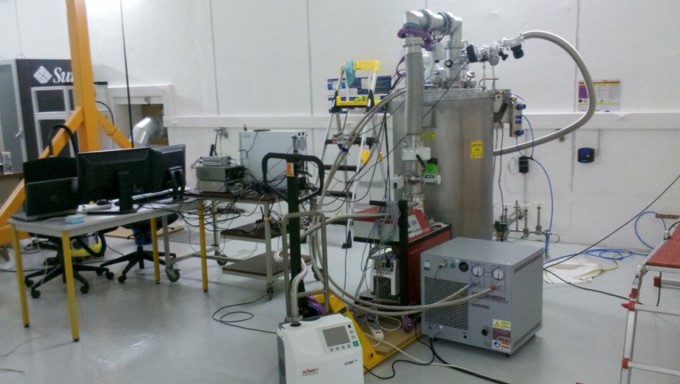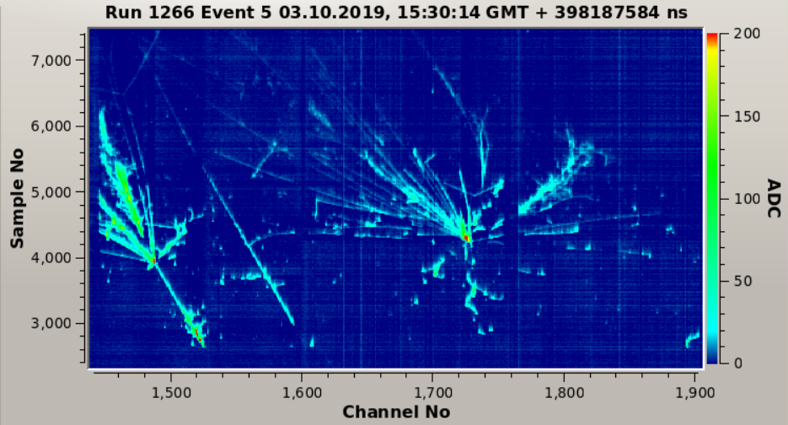Interview of Dario AUTIERO, Researcher, IN2P3
What is a neutrino and why do we want to detect them?
Neutrinos are particle physics' most mysterious fundamental particles. Having no electrical charge and virtually zero mass, they rarely interact with matter, making them extremely difficult to detect and study. However, the few discoveries that have been made about them suggest that they have characteristics that mark them out as being completely different from the other fundamental particles, calling into question the very foundations of the Standard Model. Indeed, recent studies have proved the limitations of the model by showing that the neutrino has a non-zero mass. These detailed measurements might perhaps justify why there are aspects that appear to have been missed when attempting to clarify the fundamental questions about the composition and origins of the universe.
What is a liquid argon Time Projection Chamber (TPC) detector?
As they pass through the earth only one in ten billion neutrinos interacts with an atom. To have a chance of "catching" one, it is therefore necessary to build huge detectors, composed of a particularly sensitive target material, usually a liquid. The most effective detectors in the world contain argon, a gas that changes to the liquid state at cryogenic temperatures. When a neutrino collides with one of the atoms in the liquid argon, charged particles are produced leaving ionization tracks. Tracks drift slowly in the liquid to an electronic detection surface. The combined measurement of the ionization reaching the detection surface and of the time it takes to drift makes it possible to reconstruct quite precisely in 3D the trajectory of all the particles involved.
Thanks to funding from the Labex LIO, the Lyon Institute of Nuclear Physics (L’Institut de Physique Nucléaire de Lyon (IPLN)) is the only French laboratory having such a prototype detector (200 liters of liquid argon) and the associated infrastructure. It is used for very advanced tests as part of the R&D work for the construction of larger prototypes, firstly at CERN and then in the United States. Several French teams are working with the IPNL in the preparation of the international DUNE project - the construction of a giant neutrino detector at Fermilab, near Chicago, due for completion in 2026. The 700 tons prototype ProtoDUNE dual-phase, built at CERN by using the readout electronics developed with the LABEX LIO, started operating in August 2019.
DUNE: the most complex particle physics detector

Tracks of interactions of cosmic ray particles detected with the 700 tons protoDUNE detector at CERN, built with the electronics developed at IPNL thanks to the LABEX LIO
The DUNE (Deep Underground Neutrino Experiment) project is one of the largest particle physics experiments ever conducted. One of the two experiment's detectors - which will be located 1,300 km from the most powerful neutrino source in the world (at Fermilab), and 1,500 m deep - will use a technology very similar to that used by IPNL, on a scale never seen before. It will contain 4 modules, each containing 10,000 tons of liquid argon.
Will we get answers to the mystery of the matter-antimatter asymmetry problem?
A better understanding of the neutrino could well bring us the answer to one of the greatest mysteries of cosmology: the matter-antimatter asymmetry problem. According to the Standard Model the Big Bang should have created as many matter as antimatter particles (their counterparts with the same mass, but of opposite charge) in the primordial universe. However, we can see only a very few antimatter particles in the visible universe. This enigma could be explained by our ignorance of neutrinos and their surprising behavior.

The LIO liquid argon laboratory at IPNL hosting a 200 liters test liquid argon TPC used for the developments for the larger detectors built at CERN and for the DUNE experiment
